The popularity of new types of heating devices, in particular such as underfloor heating, is growing every year. This means of space heating is often used in bathrooms and hallways, mounting the heating system under the floor covering. To date, there are 3 types of underfloor heating structures: electric, water and infrared.
The scheme for connecting a warm floor and the principles of operation of different types differ from each other. Before thinking about how to properly connect a warm floor, how the heating elements will be installed, whether a thermostat will be connected or not, you need to understand the device and the types of heating devices.
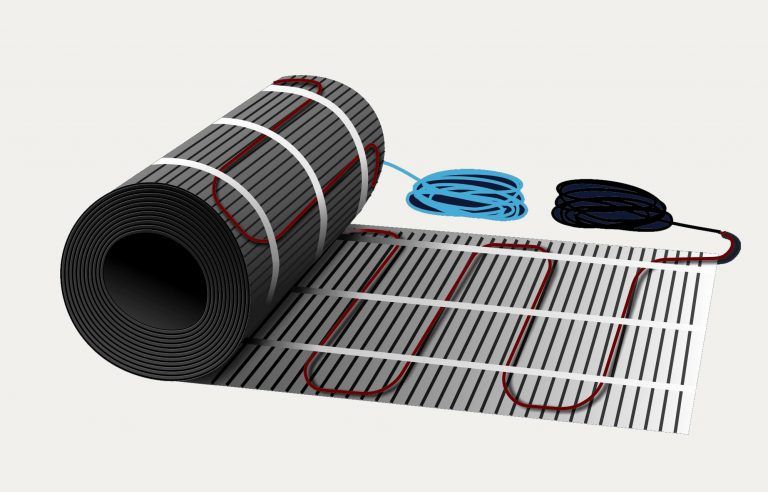 The principle of operation of electric underfloor heating is to convert electrical energy into thermal energy, using the physical properties of conductors, or rather their resistance. On top of the warm floor, the main floor covering (tile or floor screed) is mounted, which heats up and distributes heat throughout the heating area.
The principle of operation of electric underfloor heating is to convert electrical energy into thermal energy, using the physical properties of conductors, or rather their resistance. On top of the warm floor, the main floor covering (tile or floor screed) is mounted, which heats up and distributes heat throughout the heating area.
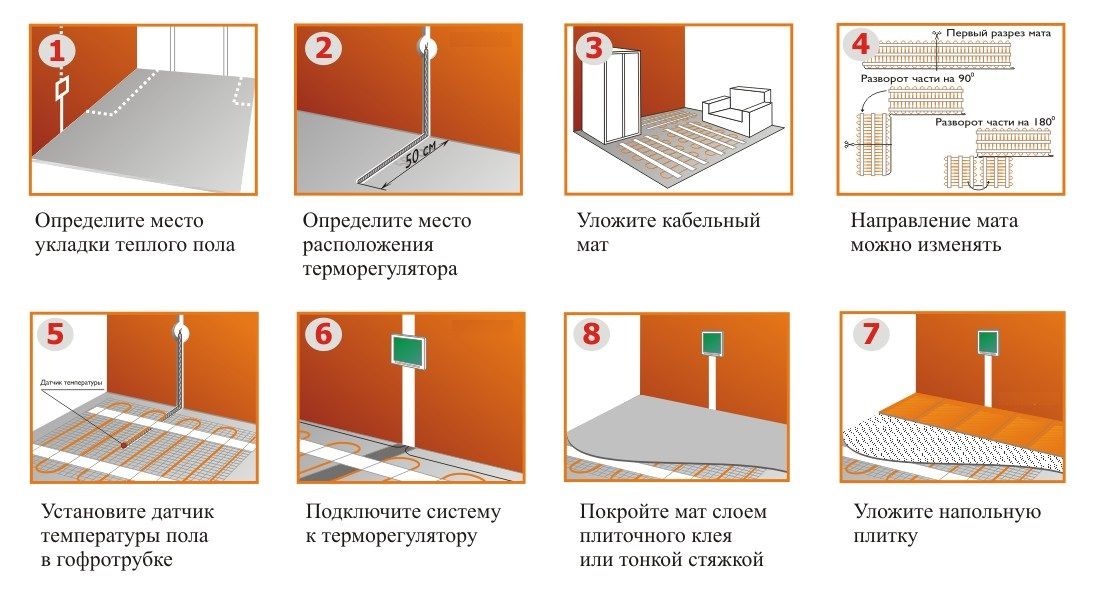 Underfloor heating connection diagram
Underfloor heating connection diagram Connection of an electric heat-insulated floor is carried out through a temperature regulator. Connection schemes for underfloor heating of all types, as well as heating elements, have a different design:
- one- or two-core heating cable (cable floor heating);
- thermal mats.
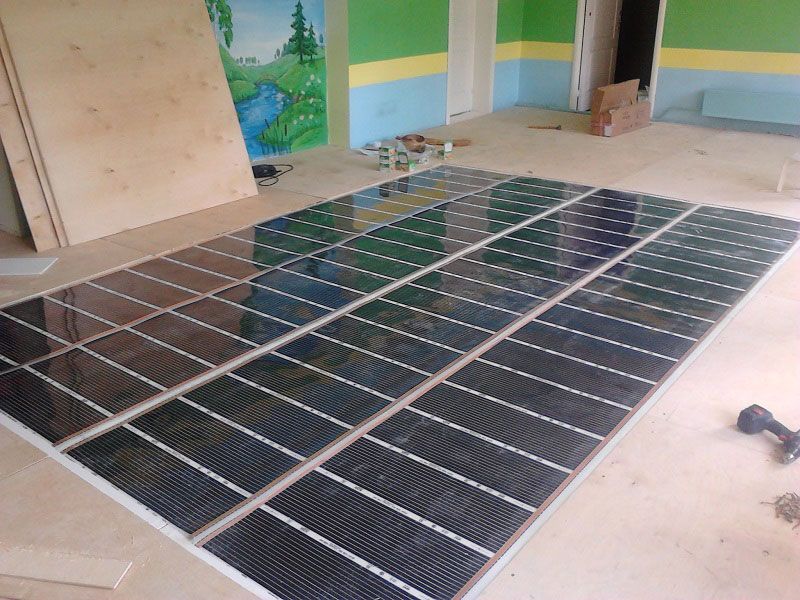 Infrared panels first heat the person, and then the space in the room
Infrared panels first heat the person, and then the space in the room Infrared warm floors are considered a new technology for this type of heating. The heating element in the heating system of such floors is a two-layer infrared film with a total thickness of up to 1 mm, in the middle of which a plate (carbon or bimetallic) is mounted.
The scheme for connecting film underfloor heating has some significant differences from other types. Electricity is supplied to the plates through ultra-thin copper-silver conductors, and thermal energy from the heating element is emitted by IR (infrared) rays from the surface using applied carbon paste. The underfloor heating thermostat “monitors” the control of the required temperature level.
Scientists believe that the most comfortable heat for the human body comes from infrared heaters.
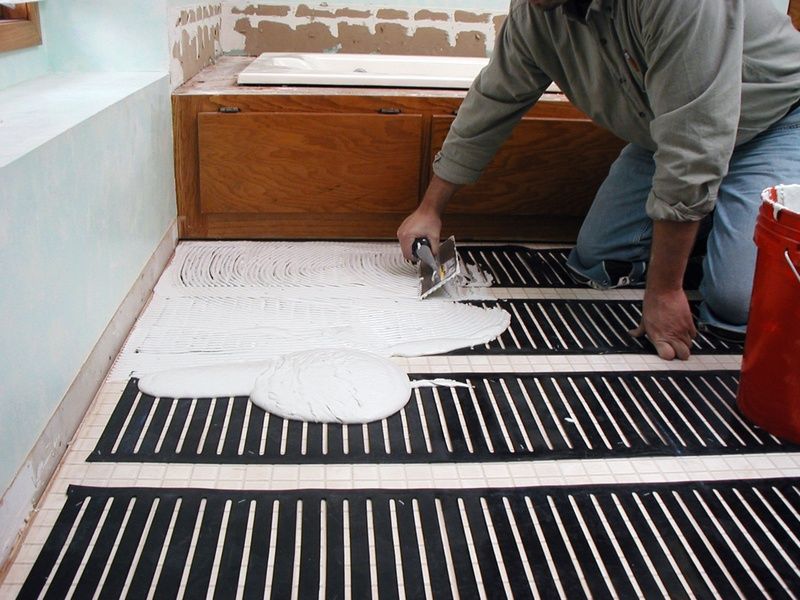 The power of thermal panels must correspond to the area of the room
The power of thermal panels must correspond to the area of the room These devices use the principle of secondary convection, according to which the human body and objects are heated, and then the air.
When choosing a warm floor, you must always take into account the power indicator. To determine this indicator, you need to know: the area of \u200b\u200bthe room, the purpose of the heating device itself (main or additional) and the type of heated room (kitchen, bathroom, balcony). There are tables with which you can determine the power of the required underfloor heating.
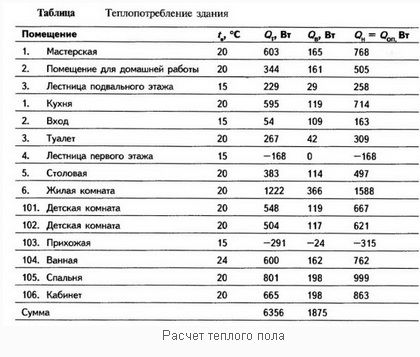
Installation and connection of the thermostat
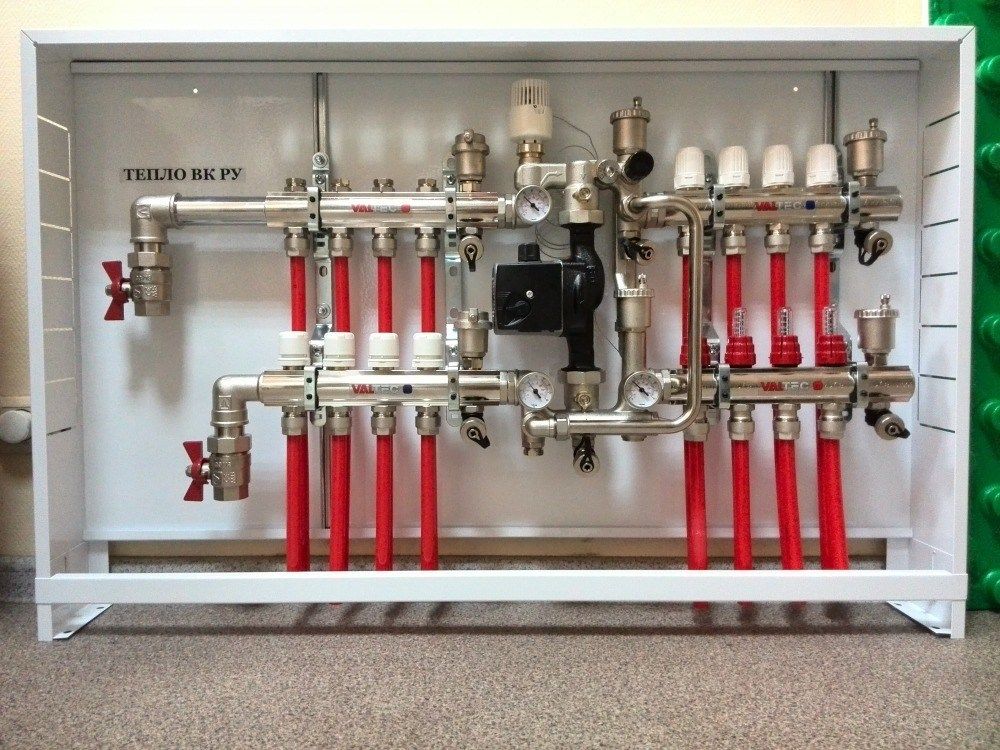 Thermostat - the brain center of underfloor heating
Thermostat - the brain center of underfloor heating
After we have got acquainted with the principles of operation and devices of varieties of new types of heating, it is worth thinking about how to connect the thermostat according to the appropriate connection scheme for underfloor heating, and where it will be installed.
The thermostat or thermostat is the "think tank" of the heating device in question. He is responsible for turning on the heater, adjusting the temperature parameters and monitoring the entire system. The device is able to "read" all the readings from the temperature sensor, which is connected with a thermal protection cable, is installed together with a warm floor and automatically turns off the power when the required temperature is reached.
 As soon as the room becomes colder, the thermostat will turn on the heating
As soon as the room becomes colder, the thermostat will turn on the heating At the same time, the thermostat remains in operation and monitors the temperature indicators. If the temperature drops below the set norm, the device will supply power to the heating system, and it will begin to function.
Today, the line of thermostats is quite diverse. There are mechanical models, combined electromechanical options and electronic ones, which can also be divided into programmable and non-programmable.
Everyone chooses and connects a thermostat for a heated floor independently, depending on the requirements, but connecting the controller to a new heating system is mandatory.
Thermostat Installation Requirements
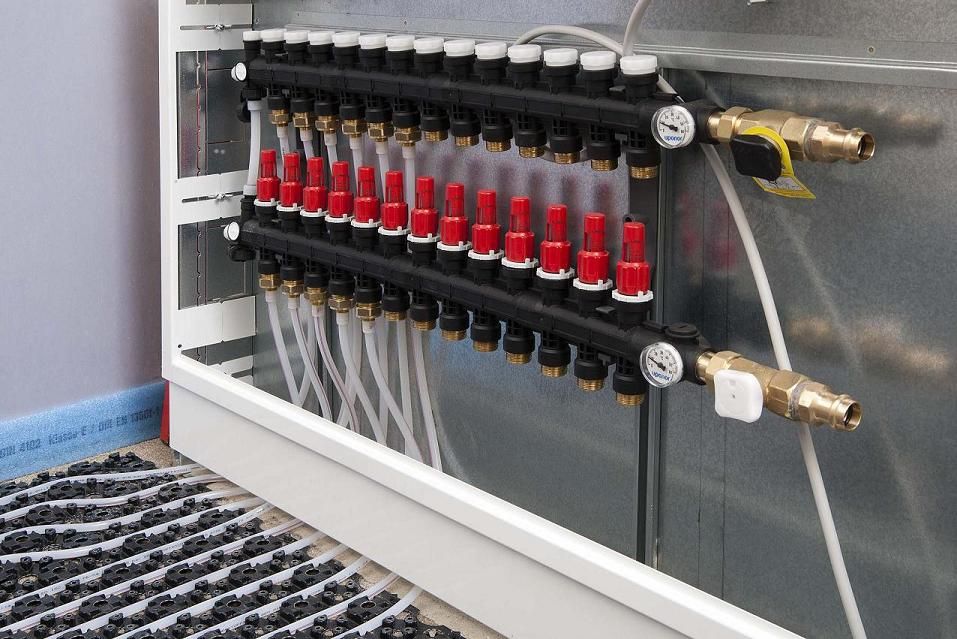 Install the thermostat near a power outlet
Install the thermostat near a power outlet The need to use a floor heating thermostat (electric and infrared) should not be in doubt; such a device cannot be switched “directly”. Before connecting a warm floor to a thermostat, it is necessary to determine the location of the thermostat itself, taking into account the scheme for connecting a warm floor.
When installing, there are certain requirements:
- The device can be installed from a warm floor at a height of no more than 1.5 m.
- The thermostat is mounted on the opposite wall from the battery (if any) to avoid overheating and false triggering of the sensor.
- According to the connection diagram for an electric underfloor heating and its regulator, the installation location must be chosen near the outlet or a separately exited cable should be pulled to the switchboard (it is recommended that the underfloor heating be connected to the switchboard through a circuit breaker).
- The connection of the thermostat to the warm floor must be carried out according to the diagram for the device.
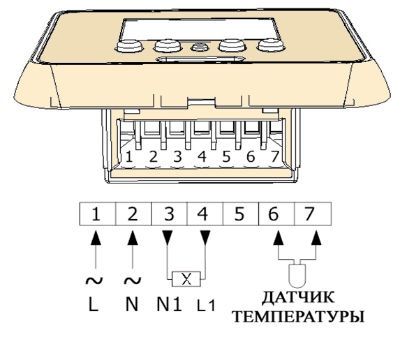
It should be remembered that according to many schemes of an electric underfloor heating, when connecting a thermostat, it is necessary to mount the heating cable in the wall in plastic pipes (each wire separately) in order to avoid a fire in the room.
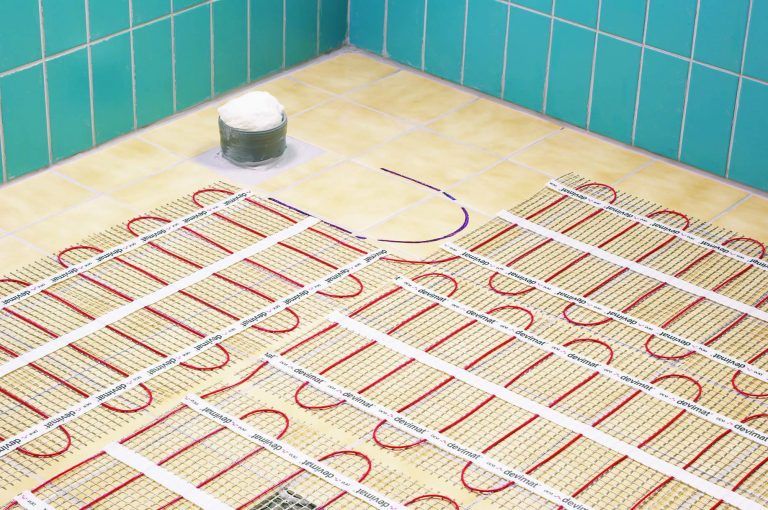 Having considered the principles of operation of types of underfloor heating and their "think tank", you should figure out how to connect a warm floor to a thermostat, and how to mount heating devices. There are requirements that must be met when installing all types of underfloor heating:
Having considered the principles of operation of types of underfloor heating and their "think tank", you should figure out how to connect a warm floor to a thermostat, and how to mount heating devices. There are requirements that must be met when installing all types of underfloor heating:
- thermal insulation of the laying surface of the warm floor;
- surface leveling;
- the temperature sensor must be located so that the heated element does not touch it;
- couplings (joining the heating element and the power cable) must be located and connected under the floor covering.
The remaining features of the scheme for connecting a warm floor to an infrared floor thermostat and types of electric floor should be considered separately.
Installation of cable electric floor heating
Installation and connection of a cable-type warm floor occurs after leveling and insulating the surface. A mounting tape is laid on which the fasteners for the cable are located at different intervals. Considering all the features of the connection scheme, the heating element - the cable is laid with a snake and fixed on the tape with fasteners (the cable should not intersect and be under permanently standing objects so that the warm floor does not fail). For information on how to install a warm cable floor under a tile, see this video:
After mounting the heating element, it is necessary to check the cable resistance tester. If the indicators are normal, you can fill the screed or lay the tiles.
After the hardening of the floor covering, you can carry out the remaining switching work and connect the electrical cable to the thermostat, and then, it is worth connecting the warm floor to electricity.
 In thermomats, the cables are already laid and fixed, you just need to unwind the roll
In thermomats, the cables are already laid and fixed, you just need to unwind the roll Installing a warm floor in the form of electric mats is easier than a cable counterpart. An electric mat is the same cable installed with a certain pitch on a thermal film. The heated mat has different lengths and power. Electricity from the switchboard is directly supplied to the floor heating thermostat.
Electric mats are convenient to install in rooms with limited floor height, they are relatively low cost and do not require an electrician for installation (you can handle it yourself). Also for mats, there is a connecting element that allows the warm floor, both to be connected with an additional mat, and to reduce.
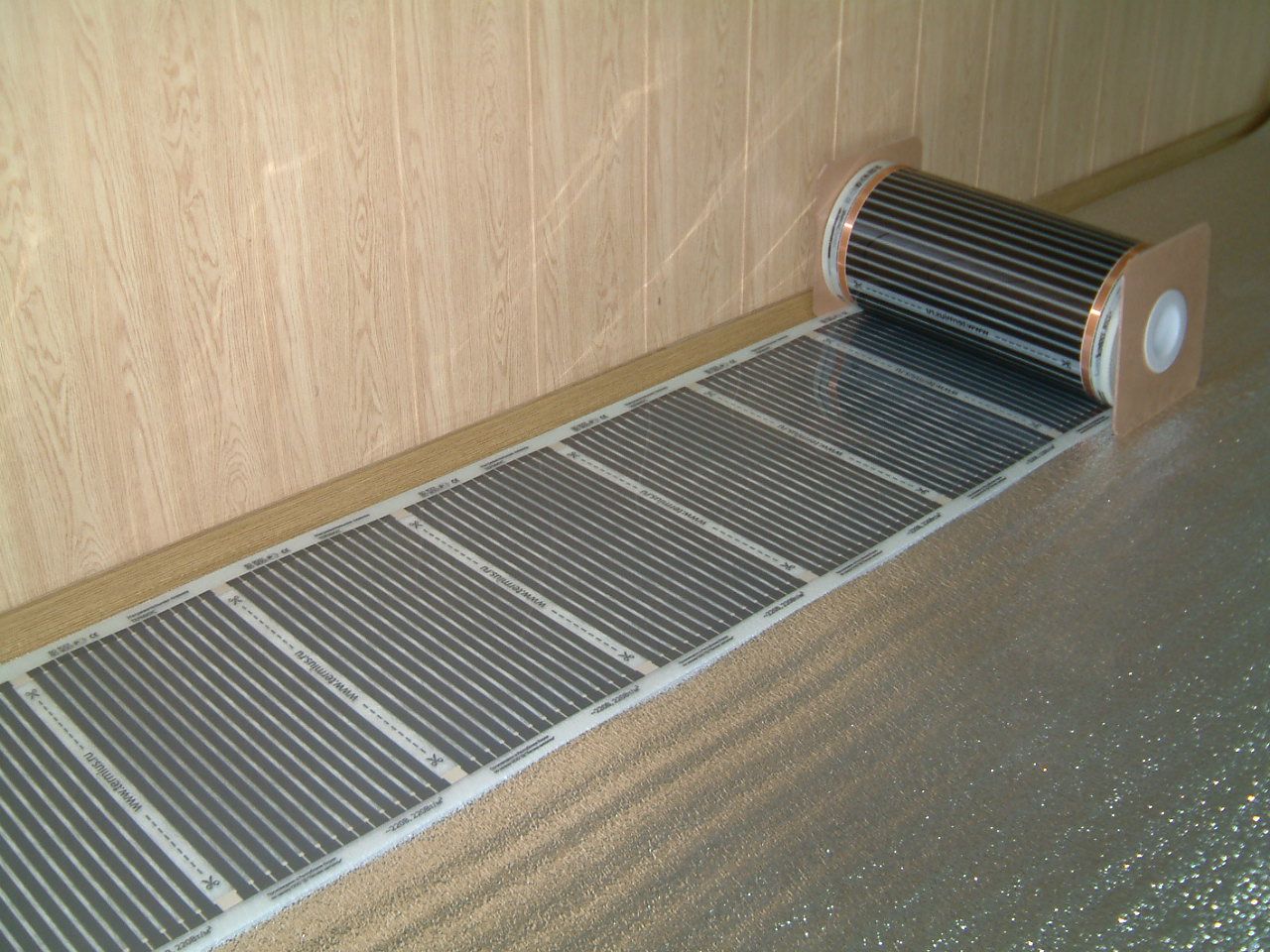 A heater must be placed under the IR panel
A heater must be placed under the IR panel The infrared film is also laid on a flat surface, but a heat-insulating substrate with a reflective plane is placed under it to reflect the radiation. The conductors that connect the heating elements of the film have contact terminals for connecting power circuits.
The connection diagram of the infrared floor heating (included in the delivery) shows that the circuit of the conductors is 3-5 sections of the plates, this is 20-30 cm, depending on the manufacturer. This makes it possible to cut the film into pieces along marked lines, which makes it possible to conveniently position the connected heating element. The subtleties of installing a warm infrared floor, see this video:
Connecting the infrared floor heating to the thermostat is carried out in the same way as with other models of a new type of heating, only without couplings, all conductors will be connected to the thermostat separately or through a common terminal block.
When installing underfloor heating, it is necessary that the power of the mat, cable or infrared film corresponds to the permissible load of the underfloor heating thermostat.
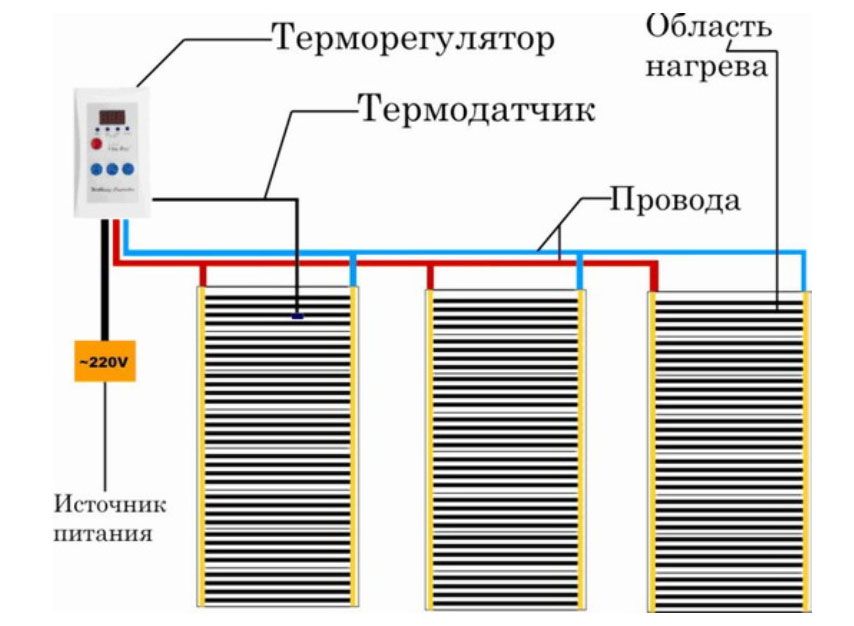 Wiring diagram for infrared floor heating
Wiring diagram for infrared floor heating When changing the size of the underfloor heating segments (building up mats, adding a film), it is necessary to take into account the underfloor heating regulator (thermostat), or rather its parameters, and, if necessary (not combining devices in terms of current and power), replace it.
Each type of underfloor heating has its own characteristics. Connecting a warm floor to a thermostat and choosing the thermostat itself is not difficult. The main thing is to analyze the situation, make your choice in favor of a certain type of heating element, choose a floor heating thermostat and proceed with the installation. 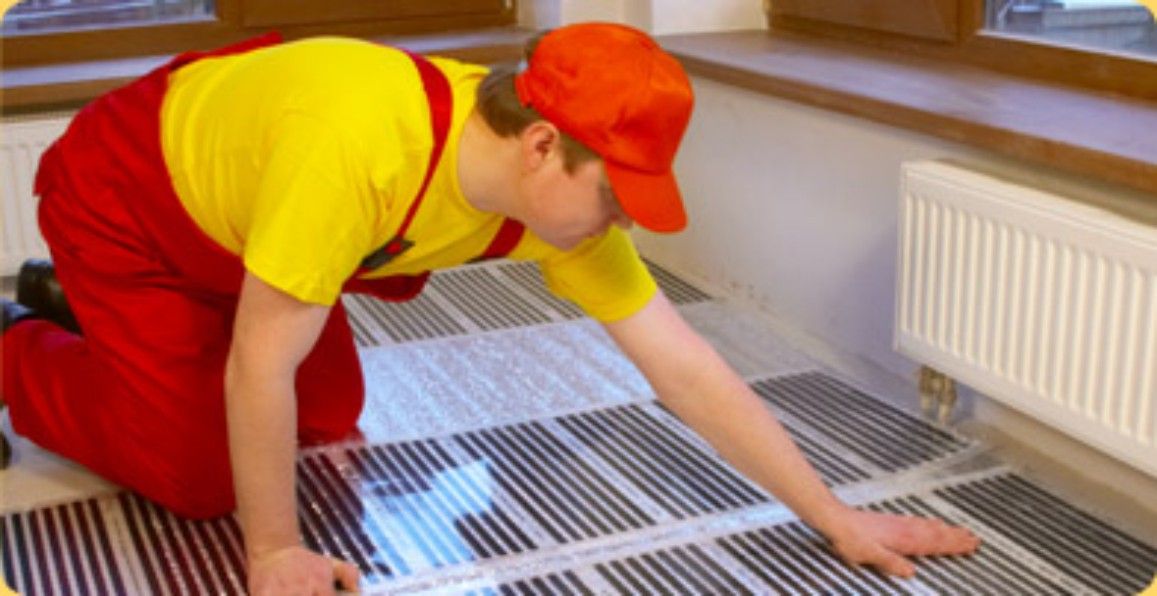
In this case, you can rely on the above points and on the instructions from the underfloor heating manufacturer, where many companies indicate the installation procedure and features. In case of difficulties, if the connection diagram of the thermostat is not clear, in order to get out of the situation, it is worth using the services of an electrician.
